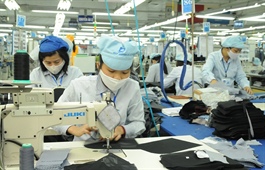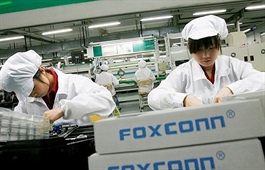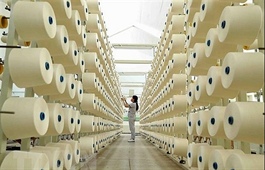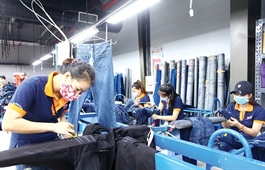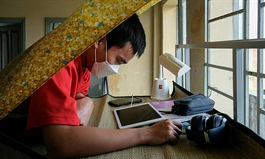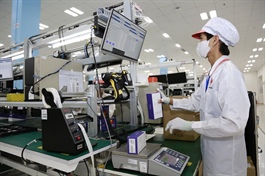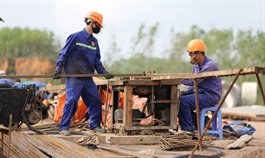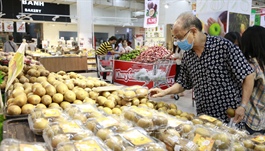Trade, domestic market to boost Vietnam GDP growth to 7% in 2021: AMRO
Trade, domestic market to boost Vietnam GDP growth to 7% in 2021: AMRO
Amid heightened uncertainty, continued policy support is essential to bolster the nascent economic recovery and facilitate the transition to the post-pandemic new normal.
Vietnam’s GDP growth is expected to rebound to 7% in 2021, riding on a recovery in external demand, a resilient domestic economy, and increased production capacity, according to the ASEAN+3 Macroeconomic Research Office (AMRO), a regional macroeconomic surveillance organization in the ASEAN+3 region (plus China, Japan and South Korea).
“Amid heightened uncertainty, continued policy support is essential to bolster the nascent economic recovery and facilitate the transition to the post-pandemic new normal,” stated AMRO’s latest report after its virtual annual consultation with local government agencies in December 2020 and January 2021.
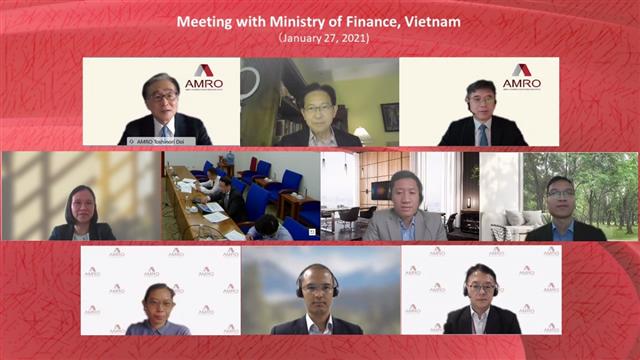
Source: AMRO.
|
After a sharp drop in the second quarter, economic growth started to rebound in the third quarter of 2020.
Manufacturing activity was boosted by robust export, which benefited from Vietnam’s relatively resilient export mix, as well as trade diversion from the US-China trade tension. Meanwhile, domestic consumption recovered following the relaxation of mobility restrictions, a result of the authorities’ effective Covid-19 containment efforts. Furthermore, the rebound benefited from an acceleration in the disbursement of public investment fund.
However, a protracted and uneven recovery of the global economy may jeopardize the recovery in external demand, warned AMRO.
“While domestic demand has picked up after a relatively successful containment of the pandemic, it remains susceptible to the risk of further waves of Covid-19 infection,” it added.
Moreover, scarring effects of the pandemic, such as the impairment of the balance sheets of the business sector, and the hit on unemployment and labor market, may undermine the prospect of recovery.
On the financial front, there is a risk that a deterioration of the banking system’s asset quality will erode its relatively thin capital buffers. Vulnerabilities may also emerge from the sizable consumer loan segment and from a sharp rise in the holdings of corporate bonds by banks.
Heightened risk aversion as well as policy surprises in major economies could lead to renewed turbulence in asset prices and capital outflows.
AMRO also stressed the importance for authorities to closely monitor any developments related to the allegation of currency manipulation by the US Department of the Treasury.
Policy recommendations
According to AMRO, greater fiscal support through both revenue and expenditure measures may be necessary to support the nascent economic recovery if the growth momentum were to weaken, while targeted support to micro, small and medium enterprises and low-income households needs to continue and be regularly reviewed for its relevance and effectiveness.
Enhancement of support programs through simpler and better-targeted disbursement will facilitate the effective use of government funds.
Meanwhile, given the benign inflation outlook, it is essential that monetary policy remains supportive of economic recovery, keeping financing costs affordable for households and businesses. With more accommodative financial conditions, heightened supervision of lending to risky sectors remains warranted to mitigate the risk of an asset bubble. In addition, enhanced supervision in this sector is important in order to safeguard the quality of bank credit in the period ahead.
On the external front, with high uncertainties in the post-pandemic global recovery, the authorities’ efforts to strengthen the external buffer should continue and be supported with greater flexibility in the exchange rate.
"It is essential to ensure continued support for long-term development issues, such as infrastructure development, human capital development, social safety net, and particularly public health, while carefully managing risks to long-term fiscal sustainability," it concluded.







